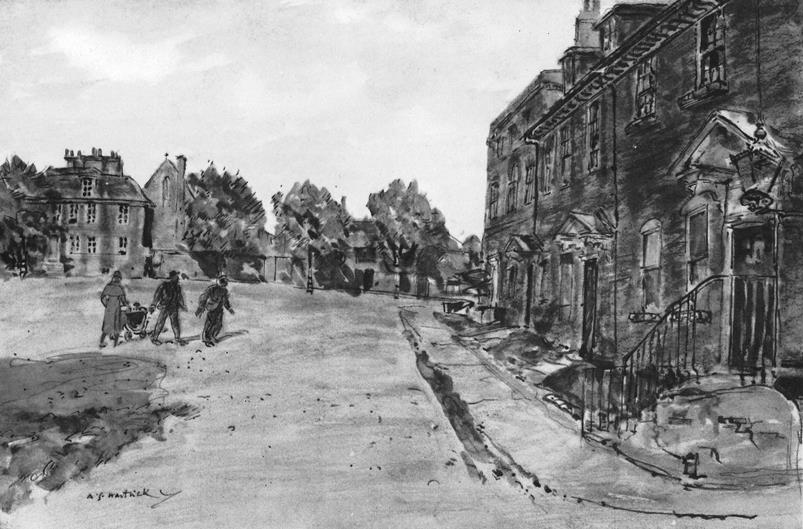
Basics
Home and SearchSite Guide
Brentford Basics
Privacy Policy
Contact
People
FamiliesPhotos of people
Name indexes incl WW1
Memories
Lists, Documents, News
Occupations
Properties
Properties: High StreetProperties: non-High Street
Photos
Maps
1909/10 Valuation Index
Pub Hub
Can You Help?
Seeking...Mystery photos
Roads Off
A-Z listJanet's Research
HistoryBeach's Jam
Nowell Parr
Turner the Artist
Queen Victoria 1840
Brentford Market
80 High Street
Clitherow of Boston House
Four Croxford Brothers
Sources & More
They SaidBooks etc.
Web Links
Next
Site Technology
Author
Home and Search
Not Brentford
The Butts, 1946
This image is from Recording Britain: an artistic documentary project compiled as the country was facing the potentially devastating impact of the Second World War. The resulting collection of more than 1500 watercolours and drawings, by artists such as John Piper, Michael Rothenstein, Barbara Jones and Stanley Badmin, is a rich visual record of buildings, landscapes and livelihoods under threat. (thanks to the V&A website)The artist was Archibald Standish Hartrick, R.W.S.; accompanying notes follow.
Areas known as 'The Butts', whether in Brentford or elsewhere, were once archery ranges.
We have had a standing army for about 300 years only, and even since its formation we have had to supplement it with Trained Bands, Fencibles, Militia, Volunteers, Territorials, Home Guard and other semi-professional bodies. The famous bowmen of England were largely comprised of city apprentices who, by their indentures, were forbidden to play cards, dice, or football, and had to practise the long bow at the butts each Sunday.
Part of the space is still kept under grass, with a few trees dotted about; but, according to Thomas Faulkner, archery at Brentford ended in the time of Charles II. Its cessation must have corresponded, roughly, with the creation of a professional army, but was caused by 'enclosures made near the spot' and the gradual increase of buildings. One one side of the square, outside the left edge of the drawing, there stands a hospital in which evidence of sixteenth-century construction is clearly discernible, But most of the houses now surrounding 'The Butts' date , like those shown here, from the eighteenth century, and have been converted into offices and flats.
 |
See also a postcard view that includes part of the nearest building, early 1900s. The site has several other photos and postcards showing The Butts: try a search on the home page.
Published February 2020